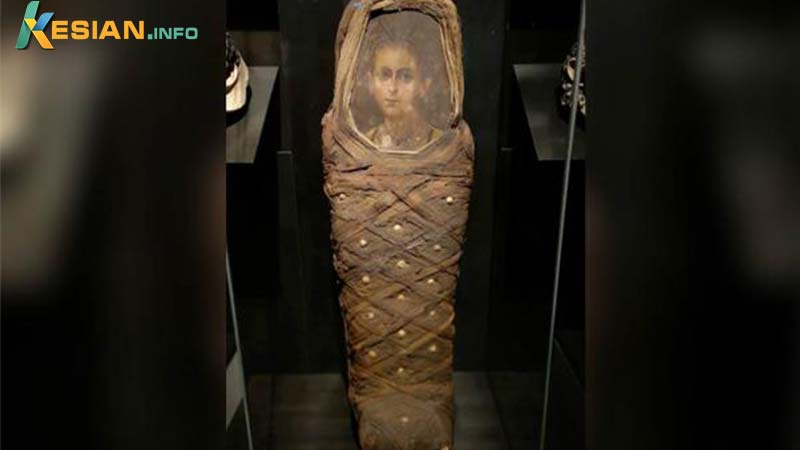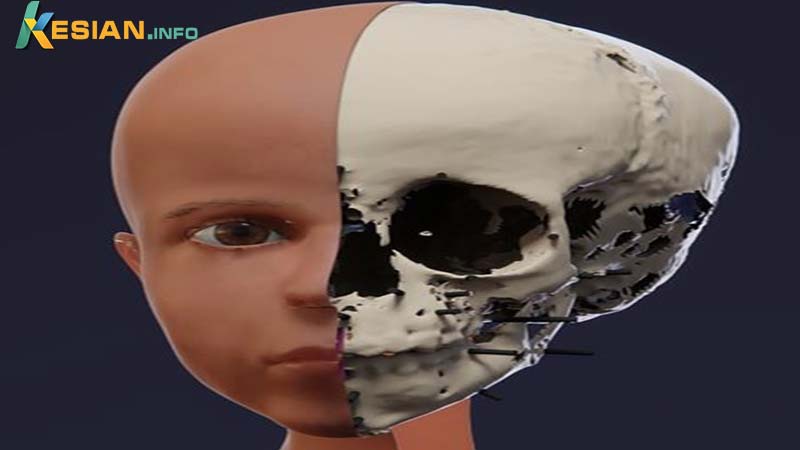Scientists have recreated the face of a 2000-year-old Egyptian boy , using CT scanning and 3D imagery technologies. The reconstructed face was then compared to the boy’s mummy portrait . In Egypt, at the turn of the first millennium AD, artists painted mummy portraits, which were then attached to the outer face of the coffin.
The young male 𝘤𝘩𝘪𝘭𝘥 was ritually prepared for mummification after his death. Some of the boy’s organs had been removed before his mortal remains were wrapped in linen bindings. Then, a detailed portrait of his face, his mummy portrait, was attached to the front of his mummy coffin.

While much is known about funerary rituals and mummification procedures in ancient Egypt what has remained a mystery, until now, is just how accurate these mummy portraits were. Aiming to settle this long-standing debate, a team of German and Austrian scientists scanned the boy’s mummy to create a detailed 3D digital reconstruction of his face.
Why Everyone Looks So Mature In Ancient Art Works
Have you ever wandered around an art museum and noticed the angry middle-aged male heads on the shoulders of medieval depictions of Jesus and wondered why they all look like that.
According to Matthew Averett, an art history professor at Creighton University, who edited The Early Modern Child in Art and History, this is because medieval artists subscribed to the concept of “ homunculus,” meaning “little man,” following the belief that Jesus was 𝐛𝐨𝐫𝐧 perfectly formed and unchanged throughout his life.
Averret explains this view as a “lack of interest in naturalism, and they veered more toward expressionistic conventions.”
The aging of young people’s faces in religious art was not restricted to Christianity, as is evident in the new study published in the journal PLOS One . The study says that the Egyptian boy’s portrait was a fairly accurate depiction of the 𝘤𝘩𝘪𝘭𝘥 “except for one aspect – the artist made the youngster look older than his 3 or 4 years.”
Lead researcher, Andreas Nerlich, director of the Institute of Pathology at the Academic Clinic Munich-Bogenhausen in Germany, told Live Science “The portrait shows slightly ‘older’ traits, which may have been the results of an artistic convention of that time.”
However, having only one portrait, it was difficult to determine whether or not it was “a common practice” for ancient Egyptian artists to make young people look older in their mummy portraits.
Reconstructing The Face Of An Ancient Child M ummy

Dating to sometime between 50 BC and 100 AD, the 30-inch-long (78-centimeter-long) ancient Egyptian boy’s mummy was discovered southwest of Cairo by excavators in the 1880s.
It was unearthed in a cemetery located near the Hawara pyramid , built by the Pharaoh Amenemhat III in the 19th century BC, to the south of Crocodilopolis, the ancient Greek name for Faiyum, a city in Middle Egypt at the edge of the Faiyum oasis .
The boy’s mummy portrait represents one of roughly 1,000 mummy portraits that have been recovered from excavations across Greco-Roman Egypt.
Only about 100 of these ancient artworks can still be directly connected with their original mummies. The new research study is the first ever to compare a mummy portrait from Egypt with a facial reconstruction of the actual mummified Egyptian in the coffin.
The mummy was first X-rayed in 1984 but the modern team of scientists used a CT scanner , enabling them to create a 3D digital image of the boy’s entire body. The CT scan revealed that the boy’s brain and many organs had been removed. An analysis of the boy’s teeth and bones determined how old he was when he died.
According to the study, the cause of the boy’s death was based on “residues of condensed lung tissue,” which suggested that he probably died of pneumonia.
The boy’s face was digitally reconstructed around details from the mummy portrait including his large brown eyes, long thin nose, and a small, full-lipped mouth. And “curled woven hair strands run from the crest to the ears,” according to the study. The necklace and medallion hanging around the dead boy’s neck were added to further enhance the 3D image.

Nerlich said the high-tech reconstruction was “so similar to the portrait” that the drawing must have been “prepared briefly before or after his death.”
In the future, other mummy portraits will likely be compared with their high-tech 3D reconstructions. But this mummified boy was the first to have his face reconstructed and the results were amazing.





